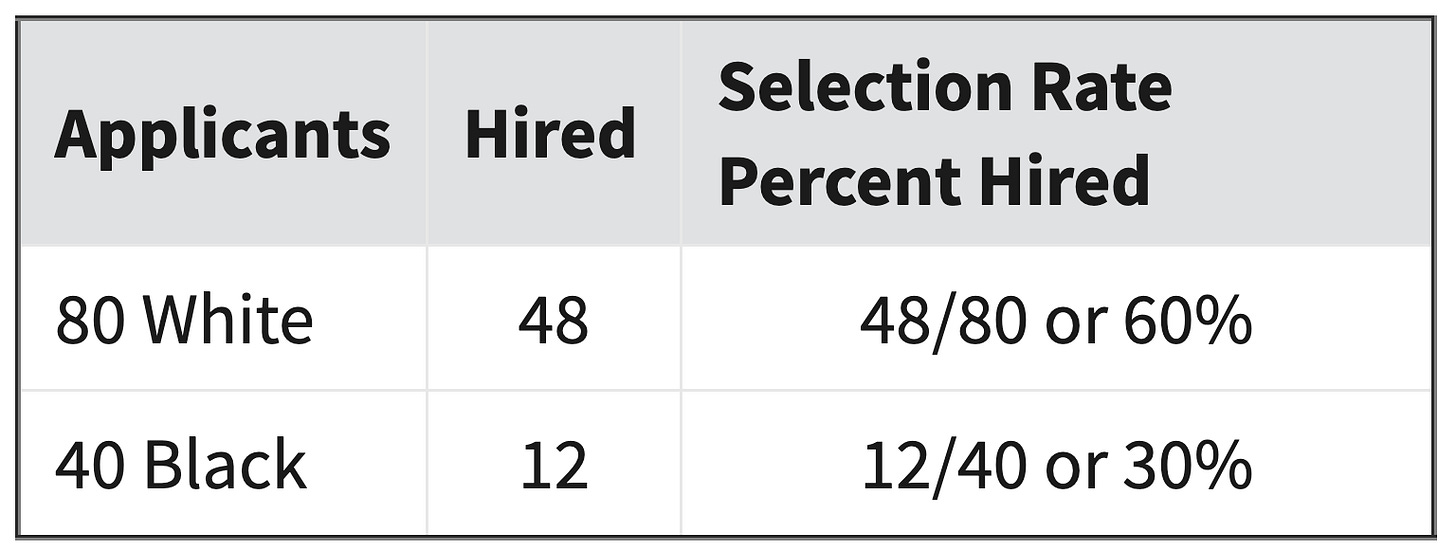Pareto's Fallacy: What Uninformed Smart Folks Assume about Race Quotas
Many people seem to presume that in elite institutions, 80% of blacks got in via merit and 20% through quotas, when the reverse is more often true.
In 1941, a Romanian-American engineer named Joseph Jura was reading a 1906 book by Italian economist Vilfredo Pareto in which Pareto observed that 20% of the population of Italy owned 80% of the land.
And thus the Pareto Principle, beloved ever since by management consultants, was born.
I suspect that a lot of intelligent people who haven’t looked into the grim realities of racial differences in achievement apply Pareto-Jura’s 80-20 proportion to their thinking about affirmative action.
For example, the Equal Employment Opportunity Commission has long applied an 80% rule of thumb to sniffing out disparate impact (a.k.a., adverse impact) discrimination. The EEOC writes:
The agencies have adopted a rule of thumb under which they will generally consider a selection rate for any race, sex, or ethnic group which is less than four-fifths (4/5ths) or eighty percent (80%) of the selection rate for the group with the highest selection rate as a substantially different rate of selection. See Section 4D. This "4/5ths" or "80%" rule of thumb is not intended as a legal definition, but is a practical means of keeping the attention of the enforcement agencies on serious discrepancies in rates of hiring, promotion and other selection decisions.
For example, if the hiring rate for whites other than Hispanics is 60%, for American Indians 45%, for Hispanics 48%, and for Blacks 51%, and each of these groups constitutes more than 2% of the labor force in the relevant labor area (see Question 16), a comparison should be made of the selection rate for each group with that of the highest group (whites). These comparisons show the following impact ratios: American Indians 45/60 or 75%; Hispanics 48/60 or 80%; and Blacks 51/60 or 85%. Applying the 4/ 5ths or 80% rule of thumb, on the basis of the above information alone, adverse impact is indicated for American Indians but not for Hispanics or Blacks.
Q: How is adverse impact determined?
A: Adverse impact is determined by a four step process.
(1) calculate the rate of selection for each group (divide the number of persons selected from a group by the number of applicants from that group).
(2)observe which group has the highest selection rate.
(3) calculate the impact ratios, by comparing the selection ratefor each group with that of the highest group (divide the selection rate for a group by the selection rate for the highest group).
(4)observe whether the selection rate for any group is substantially less (i.e., usually less than 4/5ths or 80%) than the selection rate for the highest group. If it is adverse impact is indicated in most circumstances. See Section 4D.
For example:
A comparison of the black selection rate (30%) with the white selection rate (60%) shows that the black rate is 30/60, or one-half (or 50%) of the white rate. Since the one-half (50%) is less than 4/5ths (80%) adverse impact is usually indicated.
Similarly, if whites aren’t 80% as likely per capita as blacks to be starting NFL cornerbacks, the EEOC wants to know why!
Oh, wait … No, nobody cares about that.
Likewise, here’s an 80-20 quantitative model of affirmative action that I think a lot of bright Americans have in their heads:
Paywall here.




